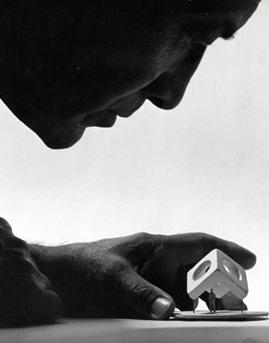Public Policy Through the Eyes of Artists
 In the world of public policy, ideas are a dime a dozen. From issues ranging from education to trade issues, everyone has their opinion about the best course of action the government should take. What’s often missing, however, are new and exciting ways to present these ideas, taking formally bland issues and finding new ways to solve them. This is where the arts community comes in.
In the world of public policy, ideas are a dime a dozen. From issues ranging from education to trade issues, everyone has their opinion about the best course of action the government should take. What’s often missing, however, are new and exciting ways to present these ideas, taking formally bland issues and finding new ways to solve them. This is where the arts community comes in.
While city planning and urban development may not be the most exciting issues to talk about, an exhibit in New York City is showcasing four artists who are attempting to use the power of artistic expression to bring attention to urban planning issues that are present in their communities. By offering a unique way of examining these often complicated public policy issues, the hope is that visitors will leave with a heightened sense of the issues that are affecting their community.
The exhibition, “Civic Action: A Vision for Long Island City,” opened on October 13th of this year and continues until April 22, 2012 at the Noguchi Museum and Socrates Sculpture Park in the Long Island City community of Queens, New York. The exhibit has received a fair amount of press attention, including a great write-up in The New York Times last week.
There have been similar art exhibits where policy ideas are presented by artists themselves, who often have no connection to the policy community or stakeholders. What’s unique about this project is that the four artists involved where all invited to partner with an urban planner or architect to imagine and conceive new developments in the Long Island City area, bringing a degree of realism and practicality to the individual projects. Instead of imagining idealistic public spaces or infrastructure improvements, the artists were advised to come up with ideas for spaces that would compliment already existing structures.
The ideas range from practical to the more unrealistic. The four artists featured in the exhibit are Natalie Jeremijenko, Mary Miss, Rirkrit Tiravanija and George Trakas.
Jeremijenko’s exhibit, titled “UP_2_U,” combines the worlds of art and technology (something we love!) and offers some unique ideas of her own. The exhibit includes robots, computer components and more simplistic things as do-it-yourself fixes to become more sustainable. The crux of the exhibit involves asking visitors to take more action to improve the communities around them; as a play off the title, she tells visitors it is “UP 2 U” to bring about the change you’d like to see.
Mary Miss’s exhibit includes a “City as a Laboratory,” where artists, policy makers and stakeholders come together to solve complicated policy problems. Another installation, titled “If Only the City Could Speak,” includes large visual thought bubbles containing ideas and policy ideas for the community. The larger tone of her exhibit invites a sense of participation engagement and encouragement for visitors to get involved in their community. One of the proposals in her exhibit concerns a local issue: four smokestacks that dominate the skyline of the Long Island City community. She proposes to turn the stacks into a kind of environmental sustainability center that creates long-lasting environmental improvements for the area.
My favorite area of the exhibit comes from Tiravanija, who among his proposals includes an idea for a section of Broadway: growing drivable grass. Yes, you read that right. Not all of his ideas are that outside-the-box, however; another favorite is more practical and involves building a community kitchen in the area.
Finally, Trakas’s work involves an area that urban planners and architects around the world have embraced more and more over the years: waterfront development. Naturally, as an artist, Trakas is less concerned with creating stores and condo complexes and stadiums on the waterfront; instead, he envisions a waterfront area as a place where residents can learn more about the community’s history through exhibits and public information. The idea is creating a public space that is less commercial and more about the community itself.
Throughout all four exhibits, the greater message seems to be that the intent is to start a conversation about the future development of the Long Island City area. What types of planning ideas should be implemented? What approaches should local government officials take to complicated public policy questions? While the artists and those involved in the exhibits may not have all the right answers, the exhibit itself is a refreshing reminder that sometimes the best policy ideas do not come from government offices or elected officials: sometimes, the best and most original ideas come from those who are active in their communities, aware of local issues and problems, and passionate enough to devote time to the issues. In this case, that category just so happens to include the arts community.